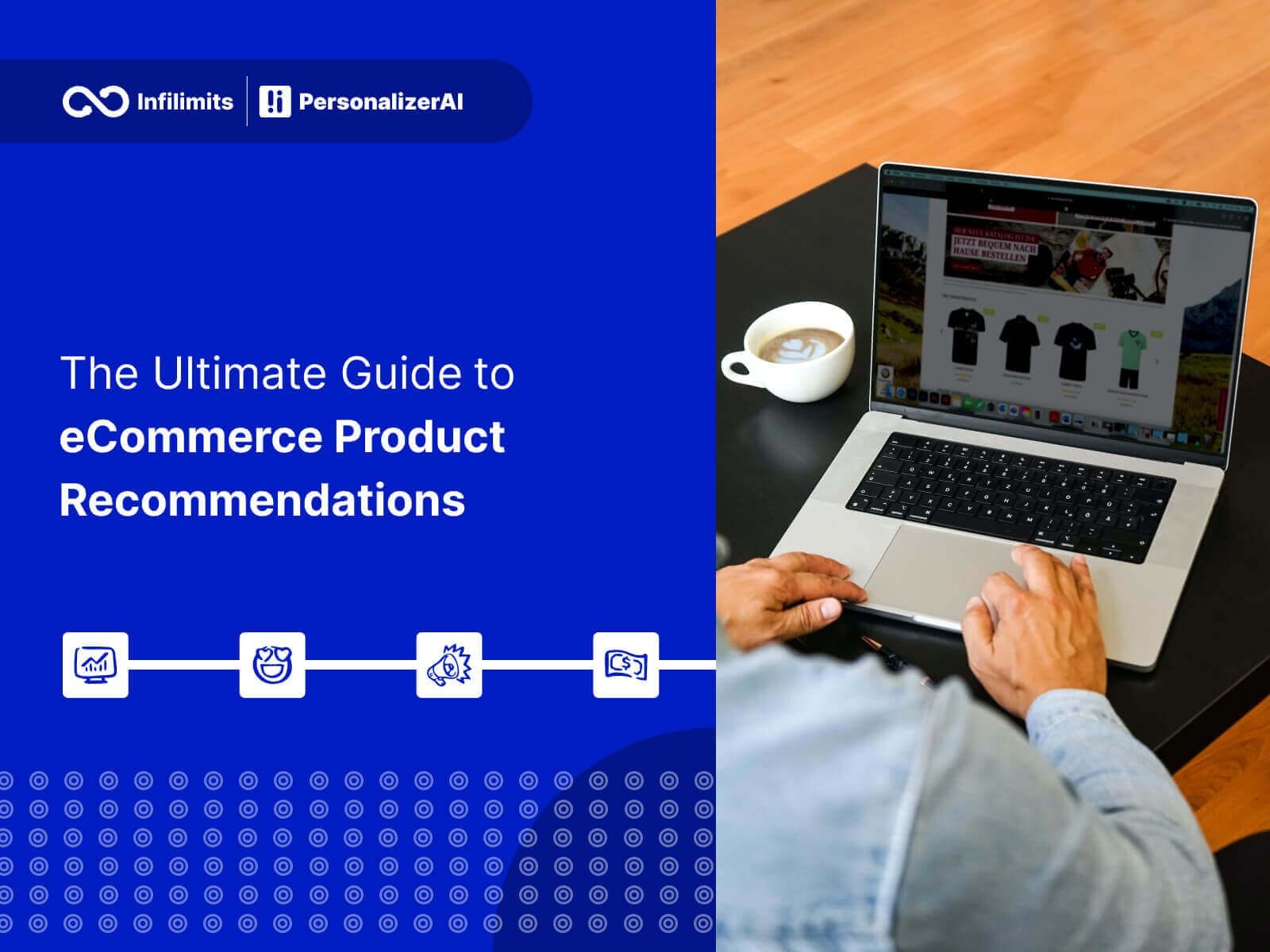eCommerce product recommendations are not new, they have been around since the early days of physical stores.
Despite their long-standing presence, many online retailers still haven't tapped into their potential. They're still missing out on the advantages these recommendations offer, such as enhancing user engagement, increasing average order value and boosting repeat purchases.
In this comprehensive guide, I will talk about the strategies and techniques that will empower you to deliver effective personalized product recommendations.
Whether you're a seasoned seller or just starting out, this step-by-step approach will equip you with the strategies and insights needed to captivate your customers, boost sales and foster lasting relationships.
Get ready to take your eCommerce game to new heights as I demystify the art of eCommerce product recommendations.
What are product recommendations in eCommerce?
eCommerce recommendations are simply product suggestions that a business offers to its customers based on their potential interests and preferences.
In brick-and-mortar stores, recommendations usually come from knowledgeable salespeople who share insights on popular items or suggest alternatives when a particular product doesn't fully meet your needs. However, in an online store, recommendations are often generated by algorithms or AI.
Product recommendations in eCommerce can be generic or personalized.
Personalized product recommendations are tailored suggestions delivered to individual customers based on their specific preferences, browsing history, purchase behavior and demographic information.
These recommendations are customized to meet the unique interests and needs of each customer, offering a more personalized and targeted shopping experience. Machine learning and AI are used for generating personalized 1:1 product recommendations.
Generic product recommendations are more general in nature and are not tailored to a specific individual. They are based on popular choices among customers as a whole or broader trends in the market.
Generic recommendations may include trending products, best sellers or items with high ratings, but they are not personalized to the preferences of individual customers.
Why are product recommendations important in eCommerce?
Personalized product recommendations are estimated to account for more than 35% of purchases on Amazon. The impact of providing personalized product recommendations is substantial for any eCommerce brand. The key word here is “personalized”.
Research indicates the critical role that personalized product recommendations play in attracting repeat customers, enhancing their shopping experience and boosting profitability.
- Shoppers that clicked a product recommendation were nearly 2x as likely to come back to the site.
- 37% of shoppers that happened to click on a recommendation during their first visit returned.
- 75% of customers are more likely to buy based on personalized recommendations.
By leveraging customer data and browsing history, product recommendations provide personalized suggestions that align with individual preferences and interests. This tailored approach enhances the relevance of product suggestions and the likelihood of repeat purchases.
How do eCommerce product recommendations work?
There are a variety of ways to create product recommendations, but the most common approach is to use product recommendation engine or system.
E-commerce product recommendations work by using machine learning to analyze customer data and identify patterns of behavior. This data can include things like the products that a customer has viewed, purchased, or added to their cart. The recommendation engine then uses this data to make predictions about what products the customer might be interested in.
What Are eCommerce Product Recommendation Engines?
eCommerce product recommendation engines are advanced algorithms or systems that analyze user data and behavior to suggest relevant products to online shoppers. These engines use various techniques such as collaborative filtering, content-based filtering, and machine learning to generate personalized recommendations.
Recommendation engines can be trained on a dataset of historical data, such as purchase history, browsing behavior and social media activity. This data can be used to learn the preferences of individual customers and to identify products that are likely to be of interest to them.
There are a variety of different machine learning algorithms that can be used for product recommendations. Some of the most common algorithms include:
1. Collaborative filtering
Collaborative filtering is a technique that uses data from multiple users to make personalized recommendations.
Collaborative Filtering analyzes customers' past behavior, such as purchase history and product views, to identify similar customers. It recommends products based on what those customers have purchased or viewed.
2. Content-based filtering
Content-based filtering uses data about the product itself, such as product attributes, categories, and descriptions, to make personalized recommendations.
It recommends products that are similar in characteristics or features to products that the customer has already shown interest in.
3. Hybrid filtering
Hybrid filtering combines collaborative filtering and content-based filtering. This approach combines the strengths of both techniques to provide more accurate and personalized product recommendations.
The best algorithm for your business will depend on the specific data that you have available and the needs of your customers. However, all of these algorithms can be used to create effective product recommendations that can help you to boost sales and improve customer satisfaction.
Also read: Maximize Shopify Sales: Improving Product Recommendations with the Power of Machine Learning
Once a set of recommended products has been identified, they are displayed to the customer in a variety of ways, such as:
- Homepage: Recommended products can be displayed on the homepage of an ecommerce website, alongside other popular products and featured items.
- Category pages: Displayed recommended products on category pages, alongside other products in the same category.
- Product pages: Product recommendations are displayed on product pages alongside the product that the customer is currently viewing.
- Pop-ups: Recommended products can be displayed in pop-ups. Pop-ups can be used to capture attention and encourage users to buy products.
- Search results: You can recommended products in search results alongside the products that match the customer's search query. Implement zero-result recommendations on your online store to keep the user engaged and provide them with alternative options, ultimately increasing the likelihood of a sale.
- Emails: Recommended products can also be sent to customers in emails.

The Benefits of Product Recommendations
Product recommendations boost sales by increasing the number of products that customers add to their cart and purchase. They don’t just improve your customer experience by providing customers a more personalized shopping experience but also increase customer engagement and boost customer satisfaction.
Apart from the obvious benefits of personalized product recommendations there are some less obvious reasons for implementing recommendations on your online store. Here are few:
1. Reduced marketing costs
Implementing eCommerce product recommendations can lead to a significant reduction in marketing costs for businesses. Instead of deploying broad and costly advertising strategies, businesses can allocate their marketing resources more effectively, reaching the right customers at the right time with tailored messages.
With personalized recommendations, you can maximize your online store's upselling and cross-selling potential. This precision targeting not only increases the chances of conversions but also reduces wasted marketing expenditures.
2. Reduced decision fatigue
Customers often feel overwhelmed by the abundance of choices and leave your online store before buying anything. Product recommendations help streamline the decision-making process by presenting relevant options, reducing decision fatigue and making shopping more convenient for them.
3. Competitive advantage
Implementing effective product recommendations can give ecommerce businesses a competitive edge. By providing a seamless and personalized shopping experience, businesses can differentiate themselves from competitors and attract and retain more customers.
The number reason you should start leveraging personalized product recommendations: your competitors are either using it already or will soon enough. And the advantage gained from applying AI for product recommendation will be significant.
When shoppers receive personalized suggestions that align with their interests, they are more likely to return to the store in future thereby increasing repeat purchases.
Recommended Reading: Benefits of Personalized Product Recommendations in eCommerce
Types of eCommerce product recommendations
There are several types of product recommendations commonly used in eCommerce. Each recommendation type serves a specific purpose and is effective in influencing customer behavior. Here are the some types of product recommendations:
1. "Customers who bought this also bought"
Purpose: This recommendation type suggests products that are frequently purchased together with the item a customer is currently viewing or considering.
Effectiveness: By showcasing related items, it helps customers discover complementary products they may not have initially considered. It increases the average order value by encouraging customers to add more items to their cart.
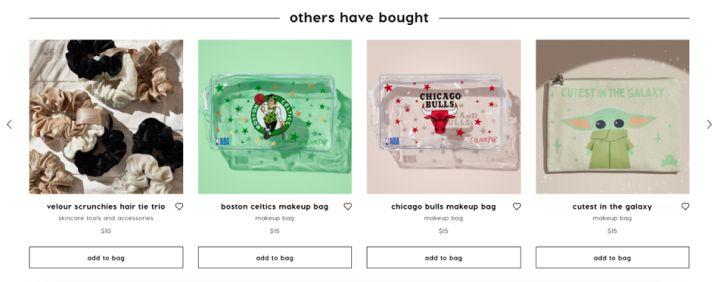
2. "Frequently bought together"
Purpose: It suggests products that are frequently purchased together as a bundled or package deal.
Effectiveness: It promotes upselling and cross-selling by presenting customers with a convenient package of products that are commonly used together. It increases the likelihood of customers adding multiple items to their purchase, resulting in higher sales revenue.
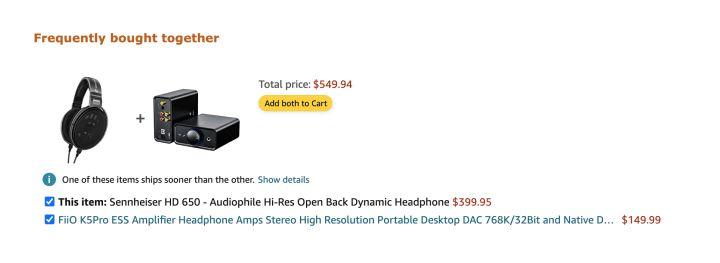
3. "Based on your browsing history"
Purpose: This recommendation type tailors product suggestions based on a customer's browsing history and previously viewed products.
Effectiveness: It personalizes the shopping experience by offering products that align with the customer's interests and preferences. By reminding customers of items they have shown interest in, it increases the chances of them making a purchase and enhances overall customer engagement.

4. "Recommended for you" based on customer preferences or past purchases
Purpose: It uses data on customer preferences, purchase history and behavior to generate personalized product suggestions.
Effectiveness: By delivering highly relevant recommendations, it strengthens customer loyalty and satisfaction. It leverages customer data to create a tailored experience, increasing the likelihood of repeat purchases and fostering long-term customer relationships.
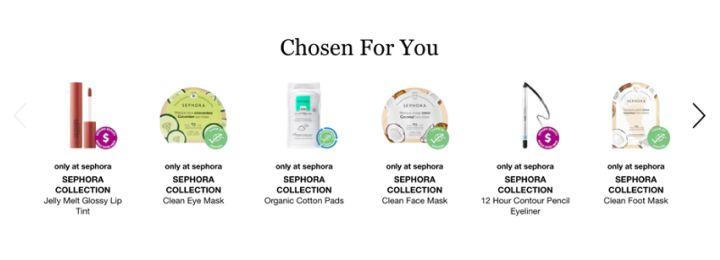
5. "New arrivals" or "Recently added"
Purpose: This recommendation type highlights recently added products or new arrivals in the store.
Effectiveness: It creates a sense of urgency and excitement by showcasing fresh and trendy items. It appeals to customers who are interested in staying up-to-date with the latest products, encouraging them to explore and make new purchases.

6. "Popular products" or "Bestsellers"
Purpose: It features products that are popular among other customers or top-selling items.
Effectiveness: It leverages social proof and the principle of popularity to influence customer behavior. By highlighting products with high demand and positive reviews, it builds trust and confidence in customers, prompting them to make a purchase.
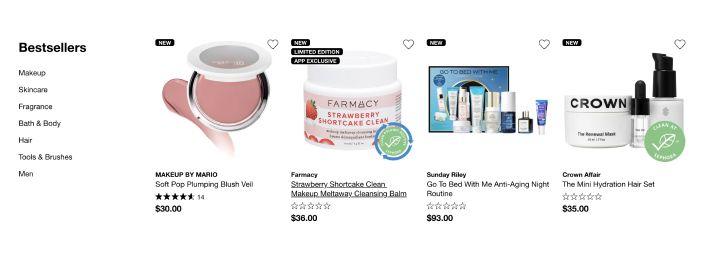
7. "Similar products" or "You may also like"
Purpose: It suggests products that are similar in terms of features, category, or style to the item being viewed.
Effectiveness: It facilitates product discovery and caters to customers who are looking for alternatives or additional options. It increases the chances of finding a product that closely matches the customer's preferences, leading to higher conversion rates and customer satisfaction.

8. "Personalized offers" or "Exclusive discounts"
Purpose: It presents personalized discounts or special offers based on customer behavior, preferences, or loyalty status.
Effectiveness: It incentivizes customers to make a purchase by providing exclusive benefits. Personalized offers create a sense of exclusivity, fostering customer loyalty and driving repeat purchases.
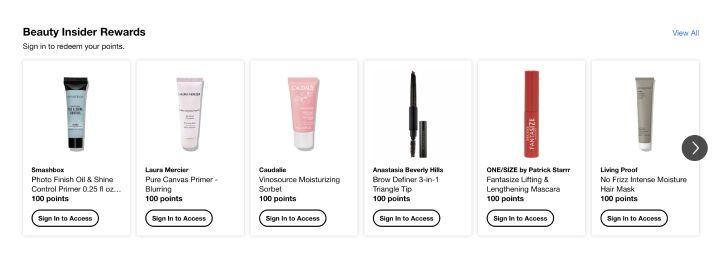
It's important to note that the effectiveness of each recommendation type may vary based on the specific context, target audience and the quality of data used for personalization.
A combination of these recommendation types can be employed strategically to cater to different customer segments, increase engagement and maximize the potential for repeat business.
Tips for effective product recommendation strategy
Developing an effective product recommendation strategy is key to maximizing its impact on your ecommerce business. Here are some tips to help you create a successful product recommendation strategy:
1. Understand your customers
Gain a deep understanding of your customers' preferences, behaviors, and needs. Collect and analyze customer data to identify patterns, segment your audience, and create targeted recommendations that resonate with specific customer groups.
2. Start with the basics
Begin with simple recommendation techniques such as "Customers who bought this also bought" or "Popular items in this category." These basic recommendations can provide valuable insights into customer preferences and serve as a foundation for more advanced strategies.
3. Leverage AI personalization
Move beyond generic recommendations and invest in personalized product suggestions. Utilize customer data, including browsing history, purchase behavior and demographic information, to deliver tailored recommendations that reflect individual customer preferences. Personalization increases the relevance of recommendations, drives higher engagement and conversion rates.
Recommended Reading: Boost Conversions and Loyalty with AI-Driven Product Recommendations in eCommerce
4. Use dynamic and real-time recommendations
Implement dynamic recommendations that adapt in real-time based on customer behavior and preferences. Use AI to provide real-time 1:1 dynamic personalized recommendation to the customers.
Show recently viewed items, highlight limited-time offers or recommend products based on the customer's current browsing session to create a sense of urgency and drive immediate action.
5. Optimize placement and visibility
The placement and visibility of your product recommendations are crucial. Display recommendations prominently on your website, such as on the homepage, product pages, and shopping cart. Use eye-catching visuals and clear call-to-action buttons to encourage customers to explore the recommended products.
6. Test and optimize
Continuously test and optimize your recommendation strategy. Experiment with different recommendation algorithms, placement options and messaging approaches to identify the most effective combinations. A/B testing and analyzing performance metrics will help refine your strategy over time.
7. Monitor and respond to customer feedback
Pay attention to customer feedback, reviews and ratings related to your recommendations. Use this feedback to improve the accuracy and relevance of your suggestions. Actively listening to customer input helps refine your strategy and build stronger relationships with your audience.
Remember, effective product recommendations should aim to enhance the customer experience, increase customer engagement, and drive conversions. By implementing these tips, you can create a tailored and compelling shopping experience that encourages customers to explore and purchase relevant products.
Monitoring and Measuring Success
Monitoring and measuring the performance of product recommendations is essential for optimizing their effectiveness and achieving business goals. Here is why tracking and analyzing performance is significant:
- 1. Performance Evaluation: Tracking the performance of product recommendations allows businesses to assess how well they are engaging customers and driving conversions. It provides insights into the effectiveness of different recommendation strategies, algorithms and placement options.
- 2. Data-Driven Decision Making: Analyzing the performance data helps businesses make informed decisions regarding the optimization of their recommendation systems. It enables them to identify areas for improvement, fine-tune algorithms and implement changes that enhance the relevance and impact of the recommendations.
- 3. ROI Assessment: Measuring the success of product recommendations provides insights into the return on investment (ROI) of recommendation efforts. It helps businesses understand the impact of personalized recommendations on key business metrics, such as revenue, customer retention and customer lifetime value.
Some Key Metrics to Monitor
- 1. Click-through Rate (CTR): CTR measures the percentage of customers who click on the recommended products. Higher CTR indicates that the recommendations are capturing customer interest and prompting further exploration.
- 2. Conversion Rate: Conversion rate measures the percentage of customers who make a purchase after interacting with the recommended products. Tracking the conversion rate helps gauge the effectiveness of recommendations in driving actual sales and generating revenue.
- 3. Average Order Value (AOV): AOV measures the average amount customers spend per order. Monitoring the AOV for customers who interact with product recommendations can reveal whether the recommendations are influencing customers to add more items to their purchase and increase their overall spending.
- 4. Revenue Generated: Tracking the revenue generated specifically from recommended products provides a direct measure of the impact of recommendations on the bottom line. It helps assess the monetary value generated from personalized suggestions.
Personalized product recommendations in eCommerce can be really valuable. However, effective implementation of personalized product recommendations goes beyond mere placement. It requires a strategic approach.
You need to determine where and what type of recommendations work best for your business. Clearly define your goals and find a feasible method for implementation based on your data constraints.
With well-thought-out strategy and the right technology, personalized product recommendations can create the tailored experiences that today's customers expect in our rapidly changing world.
When successfully implemented, they can lead to increased revenue and improved customer retention, making them valuable elements for your eCommerce success.
Recommended reading: What is Upselling? Ultimate Guide for Shopify
